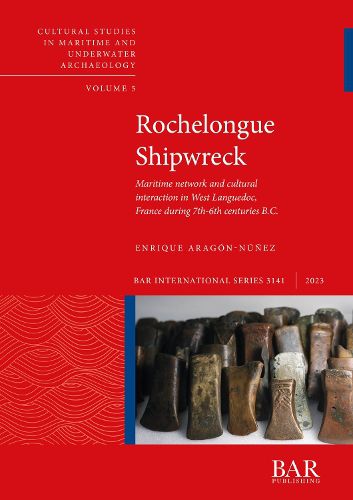Readings Newsletter
Become a Readings Member to make your shopping experience even easier.
Sign in or sign up for free!
You’re not far away from qualifying for FREE standard shipping within Australia
You’ve qualified for FREE standard shipping within Australia
The cart is loading…






This title is printed to order. This book may have been self-published. If so, we cannot guarantee the quality of the content. In the main most books will have gone through the editing process however some may not. We therefore suggest that you be aware of this before ordering this book. If in doubt check either the author or publisher’s details as we are unable to accept any returns unless they are faulty. Please contact us if you have any questions.
The Rochelongue site has yielded a remarkable assembly of mostly metallic objects from both local and foreign provenances. This allows for an investigation into the connectivity in the western Mediterranean through the lens of regional and long-distance maritime trade networks. This research uses an interdisciplinary approach to the archaeological metals assemblage - combining geographic, material culture, and network science - in order to make a more definitive interpretation of the site and its broader effect on maritime connectivity. The investigation utilises a novel approach by conceptualising the site as a more generic 'contact site' (representative of a contact zone), instead of remaining mired in old debates over shipwreck versus ritual deposit. Results based on the interdisciplinary analysis allow for a discussion regarding the inter-regional phenomenon in the Catalonia-Languedoc area. This highlights the role of Indigenous populations in a long-distance trading context, stimulated by sea connectivity. The Rochelongue shipwreck evidences a trans-Mediterranean network of varying intensities, which largely determines the levels of impact on the connected cultures from Iberian Peninsula to Central Mediterranean Sea.
$9.00 standard shipping within Australia
FREE standard shipping within Australia for orders over $100.00
Express & International shipping calculated at checkout
This title is printed to order. This book may have been self-published. If so, we cannot guarantee the quality of the content. In the main most books will have gone through the editing process however some may not. We therefore suggest that you be aware of this before ordering this book. If in doubt check either the author or publisher’s details as we are unable to accept any returns unless they are faulty. Please contact us if you have any questions.
The Rochelongue site has yielded a remarkable assembly of mostly metallic objects from both local and foreign provenances. This allows for an investigation into the connectivity in the western Mediterranean through the lens of regional and long-distance maritime trade networks. This research uses an interdisciplinary approach to the archaeological metals assemblage - combining geographic, material culture, and network science - in order to make a more definitive interpretation of the site and its broader effect on maritime connectivity. The investigation utilises a novel approach by conceptualising the site as a more generic 'contact site' (representative of a contact zone), instead of remaining mired in old debates over shipwreck versus ritual deposit. Results based on the interdisciplinary analysis allow for a discussion regarding the inter-regional phenomenon in the Catalonia-Languedoc area. This highlights the role of Indigenous populations in a long-distance trading context, stimulated by sea connectivity. The Rochelongue shipwreck evidences a trans-Mediterranean network of varying intensities, which largely determines the levels of impact on the connected cultures from Iberian Peninsula to Central Mediterranean Sea.